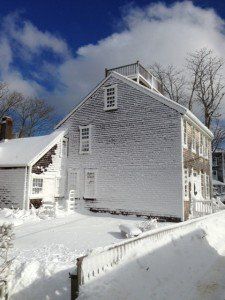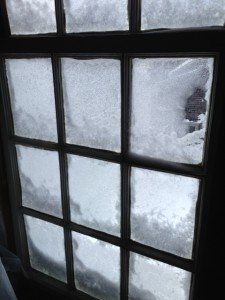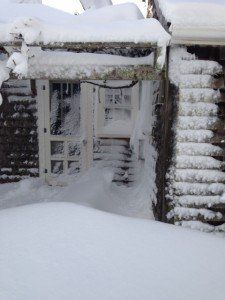O, Pioneers (Well, Maybe Not Exactly So)
The Blizzard of 2015. Snow, wind, more wind. No power, no mobile phones (horror!) But we do have – wood burning stove, gas range top, candles, lanterns.
It’s when the power goes out for a long period of time that you are forced to slow down and live a bit closer to the way that Maria Mitchell and her family once did. Having a ten-month old son provided us with a different perspective this time around. His first blizzard. We had to make sure we had extra water on hand for bottle making and water to heat for bottle washing. While it was cold outside, we warmed the house with a woodstove that my parents were very smart to purchase when building our family home in 1983. It heats the entire house and keeps us nice and warm – as long as we feed it all night! It provides us with another stovetop to cook on, to heat water on, and now, to heat baby bottles on. It also is a place where we can warm our toes after going outside and to dry out our hats, mittens, boots, and socks. This blizzard however we found that our Siberian Husky had even had enough of the wind and snow and cold. Typically, she will walk in all weather – we say she is better than the post office – but this time she wouldn’t leave the driveway. That’s how you know it really is a blizzard.
When I was finally able to get in to check the Mitchell House and other MMA properties, this is what I found. It made me think about some of the pieces I have posted over the years from Maria Mitchell’s journals where she writes about the heavy snow and cold and sleighing along Main Street or the temperatures never getting above zero. She recounts all the games she played or poems and rhymes she wrote or new tatting she worked on – all to pass the time. And being in the Mitchell House always gives me a renewed perspective on how cold it got in houses then – especially in a room not lit by a fire. So the next time the power goes out (as long as you are safe), take some time to relish it, accept it, slow down, enjoy the people you are with. Read a book, just sit quietly doing nothing, nap, or better yet, write a poem or a silly rhyme. Even better, write silly rhymes about one another as Maria did with her Vassar students at her annual dome parties. Be creative, rely on your brain to entertain you – not your “device.”
I will make one plea here – and that is for people to at least have a landline that can call out locally and receive calls. Relying on your mobile phone is not always good as this latest storm illustrated. Landlines were the one thing not damaged by the storm – at least in most places on island. And this does not mean a cordless phone. You need to have one of those good old-fashioned cord phones with the push buttons where the handset is connected by a cord to the rest of the phone folks! It is the only way we really knew what was going on – my parents calling us from off-island to give us weather and power updates.
JNLF
Recent Posts







